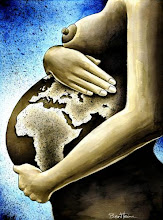

The shanty town Cinderellas
For young people in the run-down suburbs of Cape Town, the graduation ball is a real dance of freedom, proof that they are going places in the world. And these prom queens and their kings will save and sacrifice almost anything for their one night of glamour

Bernadine-Lee Rossouw
Bernadine-Lee didn’t think she would be able to afford to go to the dance, but members of the community chipped in, and an uncle donated his car. Her mother, Cheraldyne, her father and three brothers live in a wooden shack, with a carpet as protection against the wet ground. “We lived on bread for a week to save up for the dress. She looked like an angel,” Cheraldyne says of her daughter, who died a few months after the dance. “There were hundreds of people at her funeral, and we put a picture of her in her dress on the coffin. Everyone will remember her in that dress, so it was worth it.” 
Nazreen Schoor is having the final braids added to her elaborate hairdo. It has taken the local hairdresser hours to smooth the 17-year-old’s hair into a lace-like cascade. “But it has been worth it,” the schoolgirl says happily. In a few hours she will step into a dress bought by her parents for R3,000 (£236), and go out on an evening that cost the equivalent of a few months’ wages for an average worker in her area. “The dress would have cost more,” she says, “but my sister and I matriculated in the same year and we got two dresses for the price of one.”
Every year, students at South African schools celebrate their graduation with a matriculation (or matric) ball. In apartheid years, it was an exclusively white affair: white students in white tie. But after Mandela became President in 1994, every student of the Rainbow Nation embraced it. In the informal settlements in which 7.7 million people live – an urban sprawl in which many are without sanitation, electricity or plumbing in their basic, often tin-shack homes – the dance has taken on a special significance: a symbol of the freedom they fought so long for.
The evening is of particular importance to those children who are the first in their family to matriculate. In the shanty towns around Cape Town, an entire community has sometimes chipped in to ensure the teens look the part; dresses, shoes, cars and accessories are hired, bought or borrowed, and loans taken out. Hire shops do brisk trade, the most desired dress being the “Cinderella” with its fur-lined hood. Co-ordination is vital, and couples attending will get together months before to discuss outfits.



that first dress is amazing. glad this helped you bud
ReplyDelete- duane
cheers mate massive help
ReplyDeletethe stories behind the dresses are amazing. very impressive...good to see your idea develop :)
ReplyDeleteduane has a good brain. this is a great idea. i would just be careful as the subject has obviously been shot before, so looking at the stories behind the dresses (like maria said) seems like an interesting angle. xx
ReplyDeletei don't know if it's worth mentioning as well but have you seen Paris is Burning? it might give you another interesting angle on the use of clothes to express race/class etc. you can buy it in Fopp now for £7
ReplyDelete- duane
Not but i will, cheers
ReplyDelete